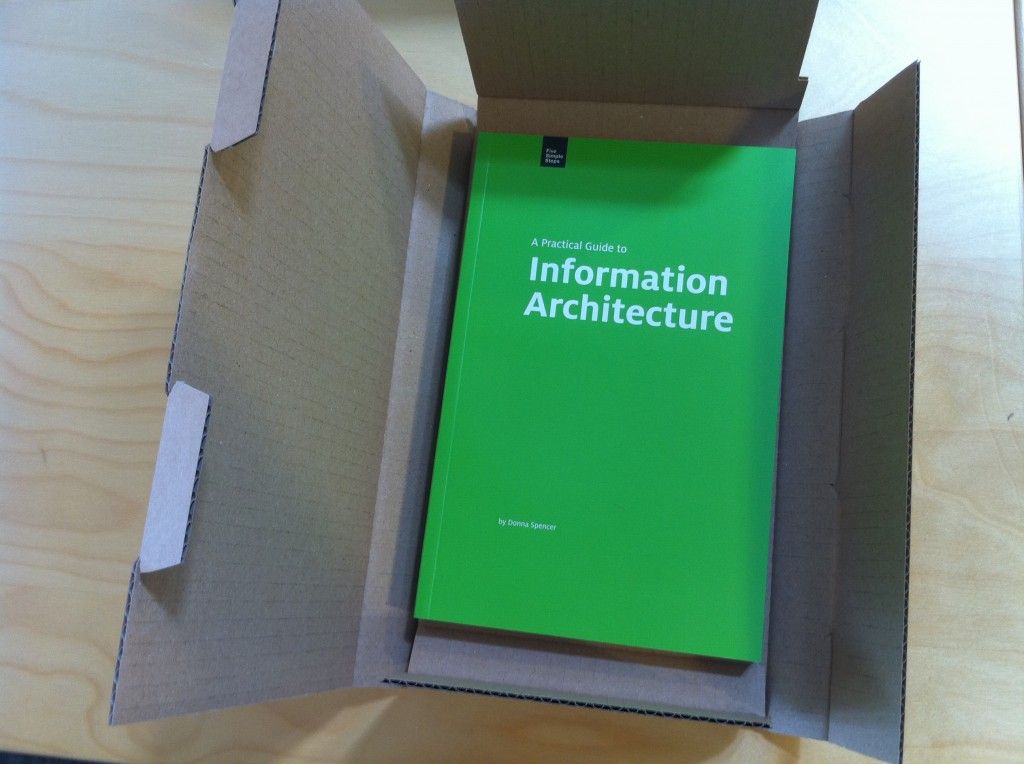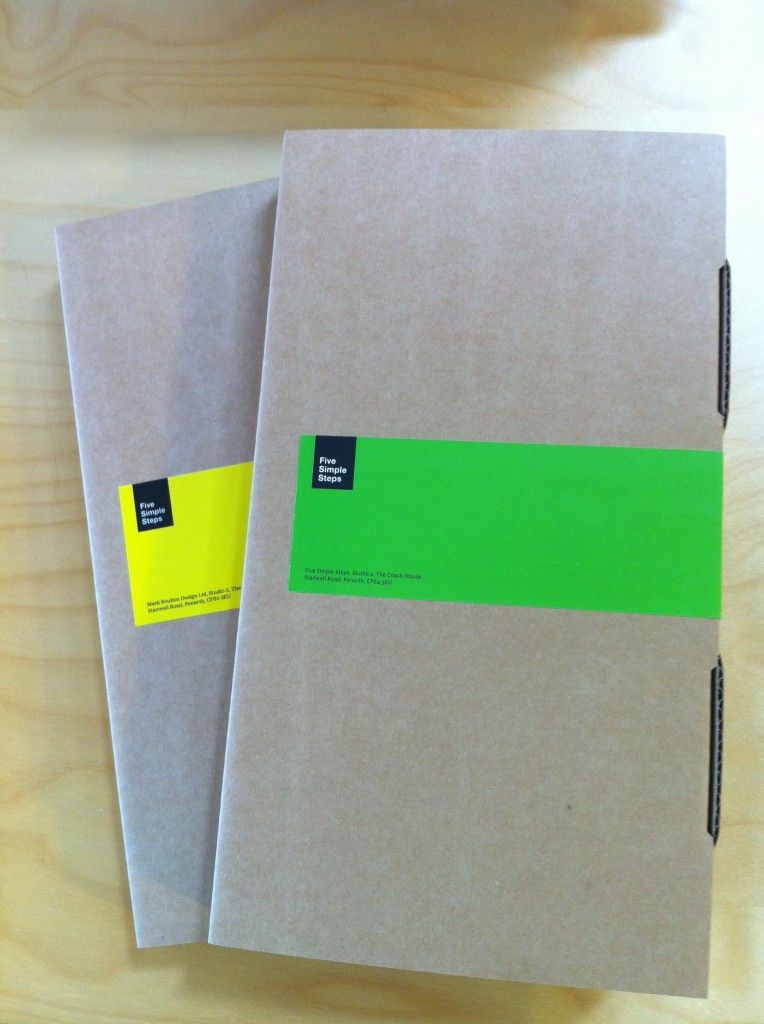Designing from one end to the other
A little over a year ago, we published my first book with Five Simple Steps. A small ripple in the publishing industry, but a large splash for us. From that single tentative toe in the water, we've gone and dipped our whole leg in with the production of six upcoming titles - ranging from Andy Clarke's Hardboiled Web Design to Brian Suda's Designing with Data.
Today sees the shipping of Donna Spencer's 'A Practical Guide to Information Architecture', and its prompted me write a little bit about how the work we did a year ago is now starting to pay off.
Donna Spencer's 'A Practical Guide to Information Architecture'
Designing from one end to the other
I've said before one of the reasons I wanted to publish my own books was because of wanting to control the process; from editing through to design and production. As time has gone on I've realised that the thing I get a kick out of is being able to control - well, actually, have an influence over - is the entire customer experience; from the moment they look at the website to buy the book, right through until they receive it in the mail. Being able to make that journey consistently is incredibly challenging as elements within the production chain are always trying to take control away from you. Let me give you an example; packaging and fulfilment.
There are many packaging and fulfilment companies across the world. They exist to help large and small companies deal with shipping goods without the headache of having to store, process, package and mail out the stock. They do it all for you and you pay for the square footage of warehouse space you use, together with a per order fulfilled charge. All good. One thing is common amongst most large fulfilment companies, however. They generally like to use their own packaging. Using your own is more costly for them - so much so, some just won't entertain the thought.
The Five Simple Steps books come in a bespoke box designed to withstand a fair bit of knocking about. You see, due to the slightly heavier paper stock, these books weigh in at 1kg each. That's a fair weight to be dropped onto its corner. The packaging also had to look attractive. We wanted to create some kind of unboxing experience - receiving and opening these books should be another step along that experience journey. It's not the end of the line. This got us thinking a lot more about the customer journey with us.
Five Simple Steps packaging. At 1kg each, these books aren’t light.
This is roughly the journey customers take:
Initial contact
How did the customer come into contact with the book? Was it a referral or reference. Word of mouth? Google? Twitter? You need to understand where they came from and why? How can you make that first impression a memorable one, because those first impressions count.
Evaluation
Is this produce for me. Will this book make me a better designer/developer/IA/project manager? How does this book relate to me and my life?
Decision
How much does it cost? Is it worth it?
Form filling
Nobody, nobody, nobody likes filling in forms. They're always difficult and riddled with potential errors. How can you make it not just easy, but pleasurable? Well, sometimes just being easy is pleasurable enough.
Fulfilment
Now I've parted with my cash, what happens? Do I receive an email? When? Are my books being shipped? When?
The waiting
How do I know what is going on? Is my order just sitting on a shelf somewhere?
Receiving and Unboxing
Receiving packages is always exciting. It's not the hardest thing in the world to make pleasurable. But, with some careful attention paid to packaging, labelling, language and materials and you can make opening a box more delightful than using the thing inside. Just look at Apple.
The digestion
The story doesn't end with receiving the book. Does it deliver on what you promised? If not, how does the customer go about changing that?
Of course, what I'm describing here is the process that's been around as long as mail order has. It's not rocket science, but it's so, so easy to get wrong. We've only just begun on this path and, to be frank, there hasn't been a week goes by that we haven't learnt something or screwed up in some way. But regardless of the pain and frustration a customer may experience, there are some things you can put in place to help them forget. Again, a sideways glance at Apple.
Spikes Of Joy
When I describe this to potential clients, I talk about 'Spikes of Joy' - those tiny moments that bring a smile to your face. If you're listening to music, it's the moments when you feel a wave of joy; when the right notes combine to create a physical reaction. The same approach can be applied to design of all sorts. It certainly applies to web design, but I'm not talking about web design here, but something more akin to Service Design. Throughout the Five Simple Steps customer journey, we want to create spikes of joy. Small moments of pleasure. Surprises. Care and attention. Love. And, you know what? It's really, really difficult.
Making something with care and attention is easy. That will always shine through in a product. Authenticity, truth and love is always easy to spot too. If product designers and manufacturers care - every step of the journey - you, as a customer, will be very satisfied at the end of that journey. BUT, it does not mean there will be moments of pleasure along the way. Sure, it may go without a hitch, but you could experience it with a complete straight face. What's hard is connecting the mundane purchasing journey with moments of human pleasure. That's difficult to do.
Books and Joy
I've always deeply loved books. I trained to be a book designer. I love their form, their smell and the knowledge they hold. Making books joyful things isn't too hard. Making purchasing books is. How do you make that process more than enjoyable? How do you create spikes of joy?
I'd love to know what ideas you may have.
Tags that this post has been filed under.

